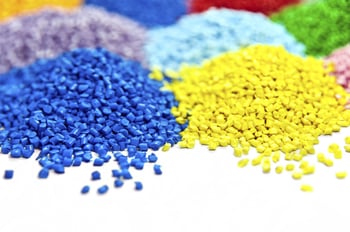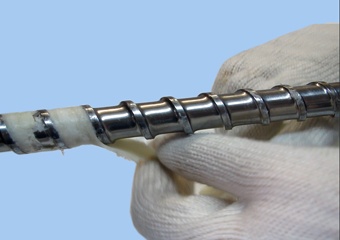 In the plastic processing industry, manual screw pulls are a necessary cleaning measure from time to time. But, if performed too frequently, they prove costly and detrimental to your bottom line.
In the plastic processing industry, manual screw pulls are a necessary cleaning measure from time to time. But, if performed too frequently, they prove costly and detrimental to your bottom line.
Without a proper preventative maintenance program and purging process, you are bound to suffer from carbon contamination. Once carbon builds up in your screw and barrel, you’ll have to conduct a complete manual cleaning of the screw by removing it from your injection molding machine or an extruder.
Not only are you killing your efficiency with the machine downtime from the screw pull, but you undoubtedly suffered from product defects and startup issues during the time the carbon built up in your machine.
While these manual cleanings are certainly necessary to maintain your long-term efficiency and profitability, they can’t be a reactive measure to address developing issues. They must be a component of an effective preventative maintenance program.
Just How Inefficient Are Your Screw Pulls?
Because screw pulls are commonly performed only after a problem is detected, a company is focused on addressing the immediate problem, and not on how costly the cleaning truly is.
Removing your screw from your machine requires great effort, and the cleaning itself takes hours of manual, tedious scrubbing. You must remove the layers of resins or contaminants that have accumulated around the screw. This excessive downtime is certainly affecting your company’s bottom line.
One extrusion company was spending 12 hours on manual screw pulls, which cost them approximately $1,500 in downtime. Overhauling seven extruders every three months, the manufacturer lost $42,000 a year.
Just by changing how they conducted each screw pull, the company cut their downtime from 12 to three hours and saved over $25,000 each year. With preventative maintenance, they could save even more.
The Wrong Way To Clean Your Screw
When it becomes clear that your screw is contaminated and affecting your final product, you certainly want to clean it thoroughly. But don’t make the mistake of scrubbing it with something abrasive like a wire brush.
This method may seem like the only way to thoroughly clean your screw, but it’s actually decreasing your screw’s useful life over time, creating nicks and gouges where contamination occurs.
While it may seem more costly to purge on a periodic basis, preventative measures significantly reduce the risk of reactive measures that are incredibly expensive. Rather than put your profits in jeopardy, start implementing purging procedures that combat color and carbon contamination, and cut down on the need to perform manual screw cleanings. When screw pulls are absolutely necessary, using glass-filled purging compound can facilitate the screw pull process and significantly reduce the downtime.
Learn more about improving your profitability with proper purging compounds and processes.








Comments